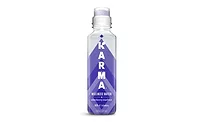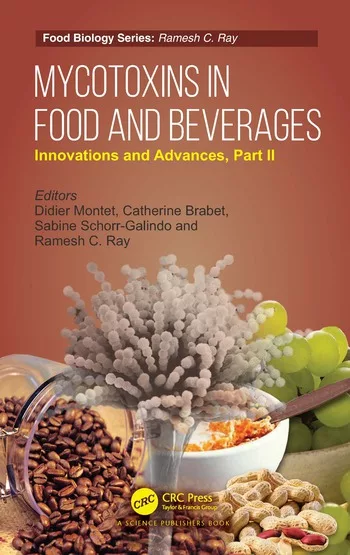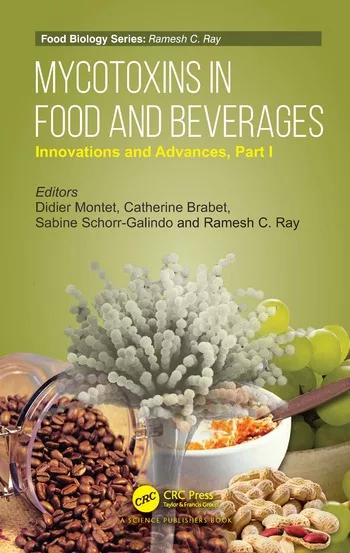Beverages offer key delivery vehicle for antioxidants
Antioxidant fortification will be important as population ages
When you take a swig out of that juice-based beverage or sports nutrition drink, chances are you are gulping down antioxidants as well — and that’s not a bad thing. According to the National Institutes of Health’s National Center for Complementary and Alternative Medicine (NCCAM), antioxidants are man-made or natural substances that might prevent or delay some types of cell damage.
Alison Raban, certified food scientist with BI Nutraceuticals, Long Beach, Calif., says a number of things are influencing antioxidants' inclusion in the American diet. “The trend influencing the use of antioxidants is the same one affecting other functional ingredients: Consumers want clean labels with simple, close to nature ingredients,” she says. “In addition, consumers want products that are either research backed or have been historically consumed, even for ingredients not normally associated with beverages; a great example of such is turmeric, which is now being featured in beverages for its antioxidant and other health-promoting properties.”
Found in many foods including fruits and vegetables, antioxidants also can increasingly be found in beverages. One company that specializes in fortifying beverages with antioxidant ingredients is The Wright Group, Crowley, La.
“Antioxidants can be added to most beverage products since there are both water-soluble and oil-soluble forms available, depending on the nature of the beverage in question,” says Sam Wright IV, chief executive officer of The Wright Group. “The Wright Group has the technology available to make even oil-soluble antioxidants like vitamin E and carotenoids cold-water dispersible.”
BI Nutraceuticals’ Raban also notes the importance of beverages as a delivery vehicle for antioxidants. “Beverages provide a great platform for different functional ingredients, [and] one of the most well-known by consumers are antioxidants,” she says. “A wide variety of ingredients fit into this category including standard vitamins like A, C and E, different types of tea and tea extracts, [and] even unique superfruits, herbs, spices, and other exotic botanicals.”
The Wright Group’s Wright says that there are two types of antioxidants used in beverages: “those that help preserve the product itself, such as mixed tocopherols and rosemary extract, and those that are present because of their nutritional benefits, like [coenzyme] Q10 (CoQ10), pycnogenol, berry extracts, cocoa flavanols, etc.,” he explains. “Some products like ascorbic acid — vitamin C — serve a dual role, helping to preserve color stability while providing a certain percentage of the [recommended daily intake] (RDI) for this important nutrient.”
BI Nutraceuticals’ Raban adds that tea, particularly green tea, is a popular antioxidant source. “It is easy to work with, especially when using a water-soluble tea extract; consumers are familiar with its taste profile; and, most importantly, the health benefits are well-established and well-known,” she says.
And the benefits of antioxidants are numerous, The Wright Group’s Wright says.
“Each antioxidant has its own special scientific story to tell, but in general, antioxidants scavenge free radicals and control oxidation, which are thought to be responsible for a wide range of degenerative conditions connected to chronic disease and aging,” he says. “This resonates in a population where the median age is in the late 30s. About 11,000 people per day turn 60 in the U.S. We will hear more and more about the dangers of inflammation, [which is] driven largely by oxidative processes in the body and is thought to be a key factor in heart disease, diabetes, arthritis, Alzheimer’s disease, cancer and other conditions.”
According to the NCCAM, free radicals are highly unstable molecules that naturally form when one exercises and the body converts food into energy. A body also can be exposed to free radicals from a variety of environmental sources, such as cigarette smoke, air pollution and sunlight. Free radicals can cause oxidative stress, a process that can trigger cell damage, according to the NCCAM.
Although The Wright Group does not produce any basic nutrients, it is a specialist in creating customized nutrient platforms for its clients, Wright says.
“We produce SuperCoat microencapsulated ingredients that provide enhanced stability as well as taste-masking benefits,” Wright says. “Antioxidants are by nature very reactive and, as such, can be challenging to apply in beverages and other food systems. Wright’s SuperCoats help volatile ingredients such as these ‘play well with others’ in today’s complex nutrient systems. We also have the ability to convert oil-soluble ingredients such as tocopherols and carotenoids into cold-water dispersible forms for use in beverages.”
Wright says that certain beverages have lent themselves more to the use of antioxidants than others.
“A wide range of beverage manufacturers utilize antioxidants, but those in fruit juice-based systems as well as sports nutrition find them to be most useful since the ingredient systems tend to be more complex and subject to stability issues, particularly color stability,” Wright says. “The health messaging and positioning also have an effect on what antioxidants are included in a given formulation.”
Consumers are looking for specific antioxidants and other nutritional components that might be insufficient in a typical diet, Wright says.
“There is a tremendous amount of nutritional information available through the media and the Internet, which leads, rightly or wrongly, to a growing trend toward self-diagnosis and self-treatment,” Wright explains. “Actually, some consumers are more sophisticated and better informed than their physicians about this topic, and doctors are struggling to catch up with the latest information. One example is CoQ10 depletion by widely used statin drugs, taken to reduce cholesterol and enhance heart health. It is hard to improve heart health by destroying bodily stores of CoQ10, yet physicians have been very slow to recommend it to their patients taking statins.”
Wright also notes that certain antioxidant ingredients are requested most often from beverage manufacturers.
"The antioxidants most in demand are still vitamin C, vitamin E and carotenoids,” Wright says. “They tend to be ‘bullet proof’ from a consumer-understanding, safety and regulatory standpoint. The others are specified mostly in condition-specific formulas positioned against discrete market segments.”
Berry exciting
When looking for sources of antioxidants, berry juices and extracts in particular often are used for flavor as well as their antioxidant benefits, Wright says.
“Pomegranate, acai, mangosteen, cranberry and other superfruits are good examples of this,” he says. “Others are rarely added for flavor, most being fairly bland and some being a problem, which needs to be masked by our SuperCoat technology.”
One company that has shared the antioxidant benefits of pomegranates is Pom Wonderful, a division of Los Angeles-based Roll Global LLC.
“Consumers like to know where their foods come from and are increasingly looking for beverages where they don’t have to sacrifice flavor for health,” says Dahlia Reinkopf, senior director of marketing for Pom Wonderful. “Pom Wonderful perfectly meets these demands by offering consumers the antioxidant power of 100 percent pomegranate juice made from the Wonderful-variety pomegranates that we grow and harvest ourselves.”
Reinkopf says that Wonderful-variety pomegranates are an excellent source of fiber and deliver free-radical-fighting antioxidants like vitamin C.
Pom Wonderful also began offering new Antiox-idant Super Teas — such as Pomegranate Peach Passion White Tea, Pomegranate Honey Green Tea, Pomegranate Sweet Tea and Pomegranate Lemonade Tea — in fall 2014.
“Antioxidants are inherent in our Pom beverages because every bottle of Pom Wonderful 100 percent Pomegranate Juice and Pom Antioxidant Super Teas contain pure Pom juice from 100 percent California-grown Wonderful-variety pomegranates,” Reinkopf says.
Why so blue?
Another popular antioxidant ingredient in beverages is blueberry. “Blueberries are customarily listed among superfoods due to their high antioxidant properties and potential to reduce the effects of age-related loss in brain function,” says Tom Payne, industry specialist for the U.S. Highbush Blueberry Council, Folsom, Calif. “There is always a lot of interest in blueberries as superfruits, especially since blueberries are often referred to as the original superfruit.”
Payne notes that blueberries are one of the hottest antioxidant ingredients in all beverages lately.
“Antioxidants are thought to help protect the body against the damaging effects of free radicals and the chronic diseases associated with the aging process,” he says. “Blueberries contain many of these naturally occurring antioxidants. Phytochemicals found in fruits, such as blueberries, continue to be investigated for their health benefits in slowing the aging process, including memory loss.
“Studies of older laboratory animals consuming blueberry-supplemented diets have shown measurable improvements in memory, coordination and balance,” he continues. “Research is also uncovering neuron regeneration in older animals fed blueberries. The role of blueberries is being studied rigorously in all these areas, and just as rigorous is the concern that all claims for beneficial effects be supported.”
Payne also notes that blueberries now are being formulated into fiber drinks. “They work well with blueberries, which make the drinks a delicious way to get natural antioxidants,” he says. “In addition to tasting good, fiber beverages that contain blueberries can be positioned as real food containing natural antioxidants, not synthetic elements manufactured in a lab. With whole-food plant sources like blueberries, beverages supply natural antioxidants and other beneficial nutrients from the plants that are most efficiently absorbed by the body.”
Two other foods with antioxidant properties that are beginning to see more use in beverages are prickly pear cactus and chia seeds.
According to a press release from Chicago-based Mintel, the use of chia seeds as an ingredient has continued to grow, with a tenfold increase in ingredient penetration globally between 2009 and 2014.
In 2013, 12 percent of products launched with chia seeds were in the beverage category, up from zero in 2009, Mintel reports. Fifty-seven percent of all food and drink products launched in the beverage category between 2009 and 2013 used a prickly pear ingredient, according to the release.
“Both chia and prickly pear have a unique opportunity to position themselves as the next big ‘it’ ingredient, given their health benefits and diversity of uses,” said Stephanie Pauk, global food science analyst at Mintel, in a statement. “For chia, even though it is technically an oilseed, the focus can be on pairing it with ancient grains, as U.S. consumers are becoming more interested in those. In the U.S., 44 percent of U.S. consumers have eaten ancient grains. Using antioxidant-rich and often gluten-free ancient grains such as quinoa or buckwheat with chia could strengthen its healthy positioning. For prickly pear, manufacturers can consider using it as a natural source of taurine and antioxidants for energy drinks or as an added source of fiber.”
In the larger picture, The Wright Group’s Wright anticipates the future for antioxidant ingredients in beverages is quite bright. “We are expecting continued growth of 6-7 percent per year in this market,” he notes.
Looking for a reprint of this article?
From high-res PDFs to custom plaques, order your copy today!







